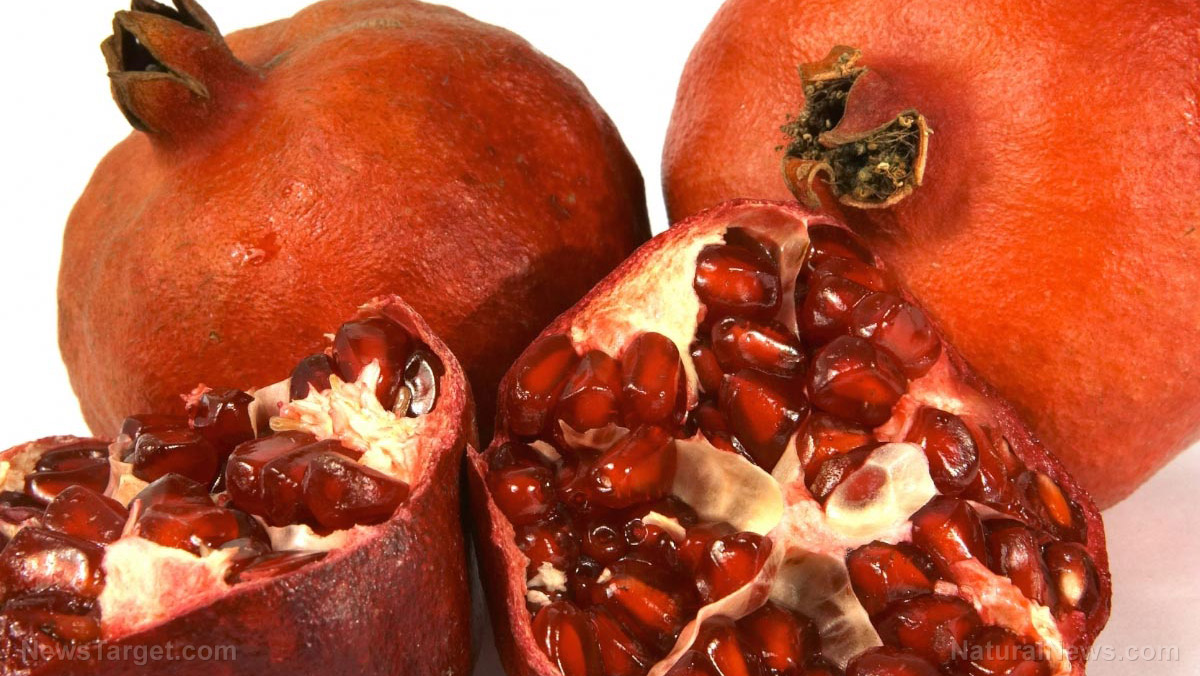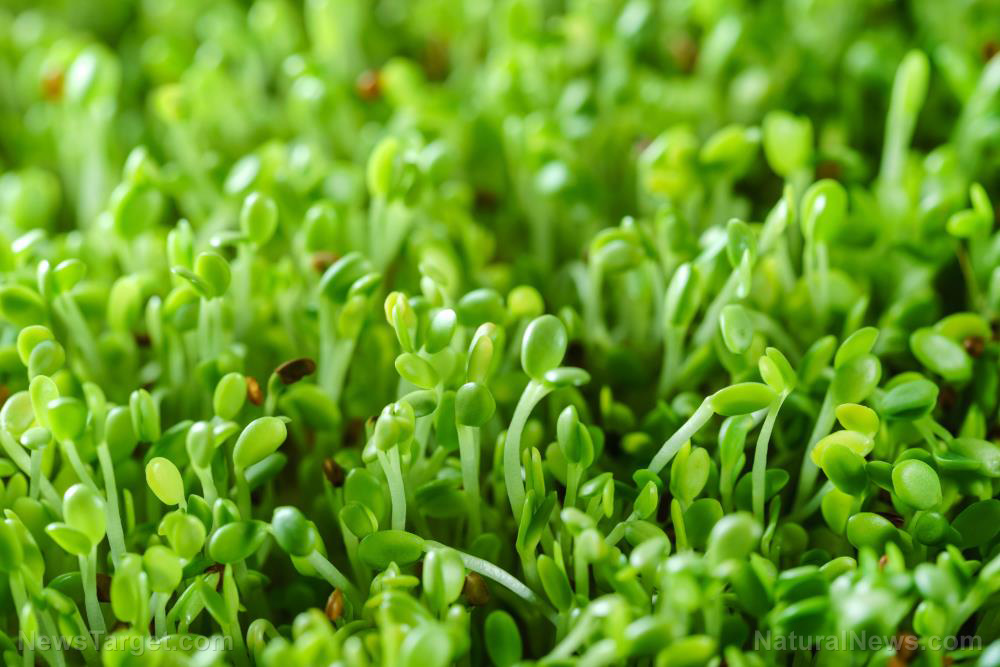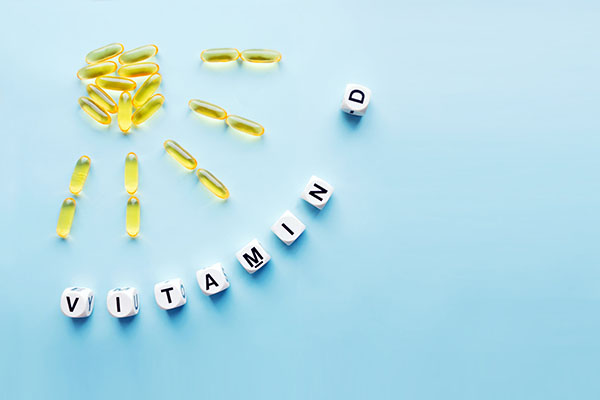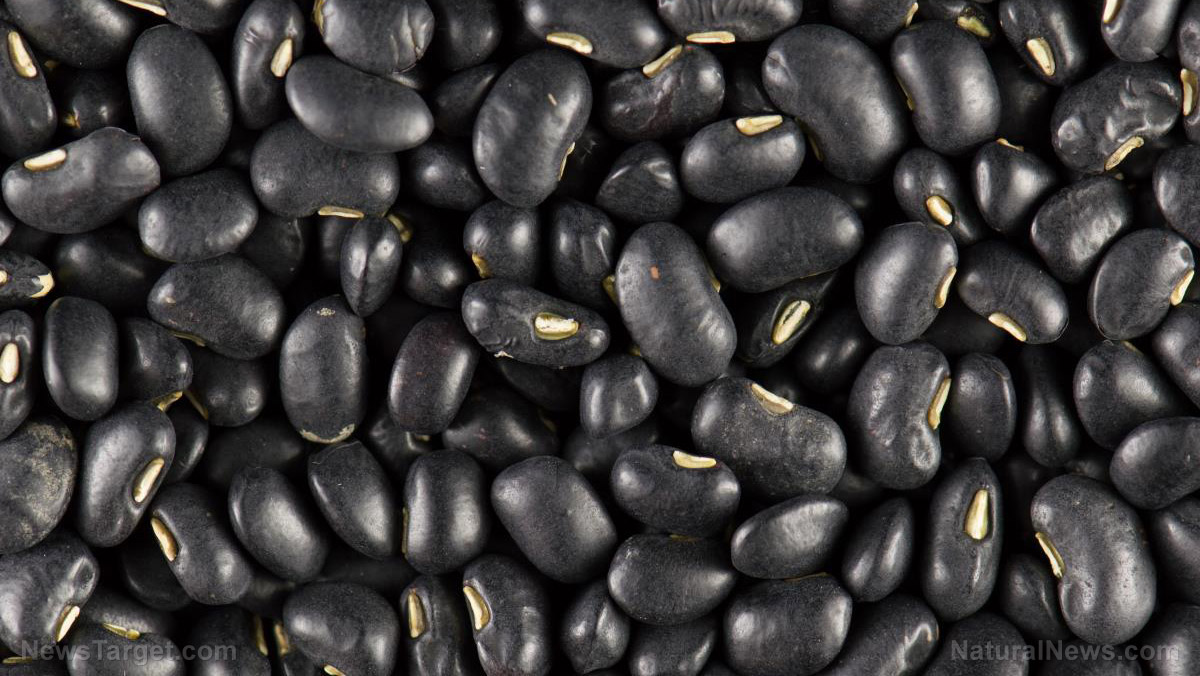 Parler
Parler Gab
Gab
Pomegranate: An Antioxidant Powerhouse and Food-As-Medicine Approach to Metabolic Syndrome
Although some low carbohydrate camps discourage fruit consumption when it comes to metabolic derangements, epidemiological studies elucidate that fruit intake is inversely related to risk of cardiovascular disease (13). Albeit correlational in nature, these studies support the notion that fruit delays onset of cardiovascular disease and mitigates its severity (13). Moreover, experimental evidence highlights that fruits can confer protection against cardiovascular disease by promoting favorable morphological changes in the heart and blood vessels after injury (13). Mechanistically, fruits contribute to “protecting vascular endothelial function, regulating lipid metabolism, modulating blood pressure, inhibiting platelet function, alleviating ischemia/reperfusion injury, suppressing thrombosis, reducing oxidative stress, and attenuating inflammation” (13, p. 1). In one review, ample evidence was presented supporting the inclusion of fruits with cardioprotective effects, such as Hawthorne, blueberry, apple, grape, avocado, and pomegranate (13). Especially noteworthy of inclusion, however, is Punica granatum, or pomegranate, a medicinal botanical with pleiotropic effects. Historically, pomegranate has been infused into ritual and ceremonial rites in a variety of religious traditions, including Greek mythology, Hinduism, Buddhism, Zoroastrianism, and early Christianity, and has been used medicinally in Ayurvedic medicine (14, 15). Pomegranate is rich in triterpenes and phenolic compounds, the latter of which category encompasses flavonoids, ellagitannins, anthocyanins, benzoic and cinnamic acid derivatives, and lignin (16, 17). Pomegranate seed oil, on the other hand, contains phytosterols and punicic acid as the predominant fatty acid (18). Pomegranate is rich in polyphenolic compounds, which can attenuate the oxidation of biomolecules and terminate oxidative reaction cascades by accepting free electrons. The incorporation of polyphenol-rich foods is essential in metabolic syndrome, since oxidative stress can initiate the pathogenesis of atherosclerosis, instigate the inflammation and lipid peroxidation that mediate cardiovascular disease, and contribute to plaque rupture, atherothrombotic events, and myocardial infarctions (19, 20, 21). Pomegranate defends against oxidative stress by activating endogenous antioxidant defense systems, elevating levels of glutathione reductase (GSH-Rx), glutathione peroxidase (GSH-Px), catalase, and superoxide dismutase (SOD) (22). This neutralization of free radicals by these pathways is critical since patients with coronary heart disease may be more likely to be insufficient in both micronutrients and antioxidants (23, 24). One active constituent in pomegranate, an ellagitannin called punicalagin, is also a free radical scavenger and ferrous chelator of hydrogen peroxide, a reactive oxygen species that inflicts oxidative damage (25). In addition, pomegranate has proven benefits for augmenting total antioxidant capacity (TAC), as less than two ounces a day of concentrated pomegranate juice administered to non-insulin dependent diabetics led to a 75% increase in mean serum TAC (26). This intervention likewise “appears to have favorable effects on some markers of subclinical inflammation,” as it led to significant reductions in levels of the inflammatory cytokine interleukin-6 (IL-6) (26). Further, in endurance athletes, pomegranate has been shown to ameliorate oxidative stress by improving levels of carbonyls and malondialdehyde (MDA) (27). While protein carbonyl groups signify relatively stable, early to the scene markers of oxidative stress, MDA is marker of cellular polyunsaturated fatty acid oxidation (28, 29). Likewise, in a healthy male cohort given one cup of pomegranate juice a day for two weeks, levels of MDA, ceruloplasmin (CP), and matrix metalloproteinases (MMPs) decreased compared to controls after exhaustive exercise (30). CP is a copper-dependent metalloenzyme that delineates cardiovascular disease risk at increased levels, as elevated circulating levels of CP can “promote vasculopathic effects that include lipid oxidation, negation of nitric oxide bioactivity and endothelial cell apoptosis” (31, p. 238). MMPs, on the other hand, are a family of proteolytic enzymes which mediate cardiac remodeling and dilated cardiomyopathy post heart attack, induce vascular remodeling, and alter atherosclerotic plaque architecture in the direction of rupture (32). On the other hand, the pomegranate juice intervention significantly increased antioxidant defenses compared to controls, as revealed by significant increases in GSH-Px, SOD, and TAC (30).Evidence of Cardioprotective Benefits of Pomegranate in an At-Risk Rodent Population
Apolipoprotein E double knockout mice that lack the class B type I scavenger receptor (SR-BI/APOE) represent a genetic subset that predictably develop coronary artery atherosclerosis, cardiac enlargement, severe cardiac dysfunction, and myocardial infarction (33, 55). In these animals, pomegranate extract has been demonstrated to decrease the number of coronary arteries harboring occlusive atherosclerotic plaques, the size of atherosclerotic plaques in the aortic sinus, and the level of oxidative stress present in both locations (33). Significant reductions in monocyte chemotactic protein-1 (MCP-1) also occurred in both sites as well as in the myocardium with inclusion of pomegranate extract (33). MCP-1 recruits macrophages, the precursors to the foam cells that enable fibro-fatty streak and atherosclerotic lesion formation, such that diminished levels of MCP-1 reduce macrophage infiltration into the vessel wall (33). Further, pomegranate treatment reduced cardiac enlargement and fibrosis in the myocardium as well as electrocardiogram (ECG) conduction abnormalities in this mouse population (33). Research has likewise demonstrated that liquid pomegranate extract or pomegranate juice administered to apoE-deficient mice prevents development of aortic atherosclerosis (34). After fourteen weeks of pomegranate juice consumption by apoE-deficient mice, the size of atherosclerotic lesions were reduced by 44% (35). In mice with advanced atherosclerosis, pomegranate juice reduced lesion size by 17% compared with age-matched controls (34). Further, compared to controls, pomegranate-supplemented mice exhibited fewer foam cells, which manifest when macrophages are dispatched to fatty deposits on blood vessel walls and serve to perpetuate atherogenesis (35). The mice who consumed pomegranate also exhibited 20% less uptake of oxidized and native LDL by peritoneal macrophages, which is critical since both oxidized LDL (OxLDL) and minimally modified LDL (mmLDL) cause macrophage differentiation into foam cells (35, 36). Impressively, “oxidation of LDL by peritoneal macrophages was reduced by up to 90% after pomegranate juice consumption and this effect was associated with reduced cellular lipid peroxidation and superoxide release” (35, p. 1062). According to Al-Jarallah et al. (2013), “Pomegranate juice administration to mice was shown to reduce macrophage total cholesterol and triglyceride content by inhibiting their synthesis and increasing cholesterol efflux to high density lipoprotein (HDL) as well as reducing low density lipoprotein (LDL) and oxidized (ox) LDL uptake” (33).Evidence of Cardioprotective Benefits of Pomegranate in Human Studies
A meta-analysis of randomized controlled human trials revealed that pomegranate juice consumption elicits consistent benefits for hypertension, with pomegranate juice reducing systolic blood pressure regardless of study duration or dose consumed (1). However, doses of approximately a cup or more produced statistically significant effects on reducing diastolic blood pressure (1). Sahebkar and colleagues (2016) thus conclude, “This evidence suggests it may be prudent to include this fruit juice in a heart-healthy diet,” although the whole fruit may be advantageous in terms whole food synergy and glycemic effect (1, p. 149). Furthermore, when middle-aged women with metabolic syndrome drank 300 milliliters (approximately ten ounces) of pomegranate juice each day for six days, levels of blood lipid peroxidation, as indicated by levels of thiobarbituric acid reactive substances in erythrocytes, and arachidonic acid were significantly decreased (37). Further anti-inflammatory effects were demonstrated by a significant increase in total monounsaturated fatty acids in the pomegranate group (37). Another double-blind, randomized, placebo-controlled trial of obese and overweight subjects elucidated that 1000 mg of pomegranate extract taken daily for one month significantly decreased mean serum levels of total cholesterol, LDL-cholesterol (LDL-C) insulin, glucose, plasma MDA, interleukin-6 (IL-6), and high sensitivity C-reactive protein (hs-CRP), whereas significant increases in HDL-cholesterol (HDL-C) were observed (Hosseini et al., 2016). The authors conclude that, “pomegranate extract consumption may reduce complications linked with obesity” (38, p. 44). In addition, in a study of patients with carotid artery stenosis, pomegranate reduced oxidized LDL by 90%, decreased antibodies against oxidized LDL by 19%, improved total antioxidant status by 130%, reduced systolic blood pressure by 21%, and reduced carotid intima-media thickness by 30% (whereas this last measure of cardiovascular risk increased by 9% in controls) (39). Astonishingly, these results were obtained with consumption of only 50 mL (3.4 tbsp.) of pomegranate juice a day for three years (39). After less than two weeks of pomegranate juice consumption, susceptibility of LDL to aggregation and retention was also significantly decreased (35). Thus, low dose pomegranate juice is a low cost, high impact intervention that most patients can easily implement to mitigate the pathophysiology of metabolic syndrome and hypertension.The Effects of Pomegranate Juice on PON-1, An Important Mediator of Cardiovascular Risk
In the aforementioned three-year human trial, pomegranate also increased activity of an antioxidant, anti-inflammatory, and anti-fibrinolytic protein known as paraoxonase 1 (PON-1) by 83% (39). In a different human study under two weeks in length, PON-1 was increased by 20% after pomegranate juice consumption (35). A hepatic-synthesized calcium-dependent esterase and organophosphate hydrolase, PON-1 is carried on HDL throughout the circulatory system (40). PON-1 is diminished in cardiovascular disease and in those who have suffered a recent myocardial infarction, and is associated with increased vulnerability to atherosclerosis in mice (40). Independent of lipid profile, PON-1 activity is considered a biomarker for cardiovascular risk (41). PON-1 imparts the cardioprotective antioxidant activity to HDL, and has been “shown to protect HDL from oxidation, partly by hydrolyzing oxidized cholesteryl esters and phospholipids in the oxidized lipoproteins, thus preserving its antiatherogenic ability” (40, p. 445). In addition, HDL induces synthesis of lysophosphatidylcholine (LPC) in macrophages as a consequence of the phospholipase activity of PON-1 acting on arachadonic acid (40). In turn, LPC up regulates binding of HDL to macrophages, promoting reverse-cholesterol transport, the process wherein excess cholesterol in peripheral tissues is returned to the liver to be excreted (40). LPC also inhibits release of superoxide anions, the reactive oxygen species which contribute to atherosclerosis, and prevents LDL oxidation by macrophages (42). Importantly, PON-1 also degrades circulating homocysteine thiolactone, lowering risk of coronary artery disease, since this homocysteine metabolite can disturb protein function and trigger vascular damage and endothelial dysfunction (43). Further, PON-1 prevents the accumulation of lipid peroxides in LDL, which may be responsible for its anti-atherosclerotic effects (40). Mechanistically, PON-1 inhibits oxidized-LDL stimulated secretion of monocyte chemotactic protein-1 (MCP-1) by endothelial cells, the precursor to atheroma formation (44). PON-1 knockout mice exhibit higher levels of superoxide radicals and leukocyte adhesion molecules, both prominent in the atherosclerotic setting, as well as “reduced expression of scavenger receptor class B1 (SR-B1) in macrophages, which diminish the capacity of these cells to bind to HDL” (40, p. 46). Genetic polymorphisms can lead to an up to 13-fold inter-individual variation in PON1 enzyme activity and concentration (40). Thus, utilization of pomegranate as a modulator of PON1 activity may be advantageous in both cardiovascular disease prevention and treatment.Adulteration of Pomegranate Juice
Sales of pomegranate juice have skyrocketed, with annual sales increasing from $84,500 in 2001 to $66 million in 2005 (45). This has spurred economically driven adulteration, as, “Increased demand for an agricultural commodity in relatively fixed supply usually drives up the cost of the raw material, which can tempt less scrupulous suppliers and manufacturers to dilute or substitute the actual commodity with lower-cost, more readily available materials” (46). One seminal study by Zhang and colleagues (2009) found that only 35% of pomegranate juice samples, procured from 23 manufacturers, contained ratios of mannitol, tartaric acid, anthocyanins, and ellagitannins resembling that of pomegranate juice, indicating pervasive adulteration (51). Further studies using high performance liquid chromatography paired with photodiode array and tandem mass spectrometers illuminated that half of the products marketed as pure pomegranate juices had altered chemical profiles compared to that of true pomegranate juice, implicating addition of exogenous polyphenols or other juices (48). Likewise, a study that combined the aforementioned methods with fluorescence detection found that three products advertised as pure pomegranate juices displayed profiles indicating dilution with grape juice (48). In a three year study of 263 juice samples, rampant adulteration was identified, with the addition of artificial and natural colors, sugars, and up to seven different fruit juices to what was supposedly pure pomegranate juice (49). Lastly, a group in Spain found pomegranate juice to be tainted with grape or peach juice based on levels of minerals, sugars, organic acids, amino acids, and volatile aromatic compounds in what was purported to be pomegranate juice (50). Research similarly brings authenticity of pomegranate supplements into question (51, 52). In an analysis of 27 commercial pomegranate extracts, the signature pomegranate-derived ellagitannins, punicalin and punicalagins, were only found in five extracts, whereas seventeen extracts contained ellagic acid and no detectable ellagitannins, and five contains neither tannins nor ellagic acid (47). Another study elucidated that pomegranate extracts contained antioxidant and polyphenol content inconsistent with the chemical fingerprint of pomegranate (52).Pomegranate Juice Cautions
Although this botanical from nature’s medicine cabinet is exceedingly safe, it is important not only to confirm quality and identity of pomegranate juice and supplementation, but also to recognize that pomegranate is a potent inhibitor of cytochrome 3A (CYP3A), such that it could suppress CYP3A-mediated drug metabolism. When 25 microliters of pomegranate juice was added to human liver microsomes, almost complete inhibition of the carbamazepine 10,11-epoxidase activity of human CYP3A took place, in a manner similar that elicited by grapefruit juice (53). Thus, pomegranate has the potential to change the pharmacokinetics of certain drugs and alter their bioavailability. Researchers suggest that pomegranate, thus, may contain some of the same components of grapefruit, such as bergamottin and (R)-6,7-dihydroxybergamottin, which potently suppress CYP3A activity (53). Therefore, when transitioning from a biomedical approach to more natural disease management modalities, caution may be warranted for using pomegranate in individuals on drugs metabolized through this pathway. Read more at: GreenMedInfo.com“The Sprouting Book”: Ann Wigmore’s guide to maximizing health through nature’s living superfood
By Belle Carter // Share
Oncologists want you to avoid these FIVE FOODS to prevent colon cancer
By Lance D Johnson // Share
Support strong bones and teeth: The essential vitamin duo you need for optimal wellness
By HRS Editors // Share
Single serving of beans found to boost vascular function
By News Editors // Share
10 Valuable herbal remedies for easing cough symptoms
By Lance D Johnson // Share
Higher fat content in meat SABOTAGES muscle growth post-workout
By Lance D Johnson // Share
Governments continue to obscure COVID-19 vaccine data amid rising concerns over excess deaths
By patricklewis // Share
Tech giant Microsoft backs EXTINCTION with its support of carbon capture programs
By ramontomeydw // Share
Germany to resume arms exports to Israel despite repeated ceasefire violations
By isabelle // Share










